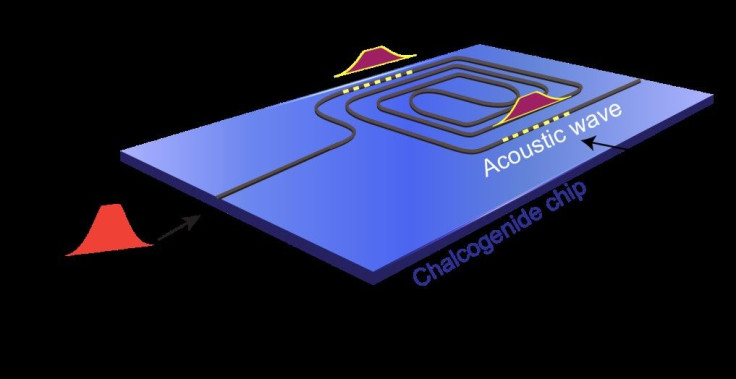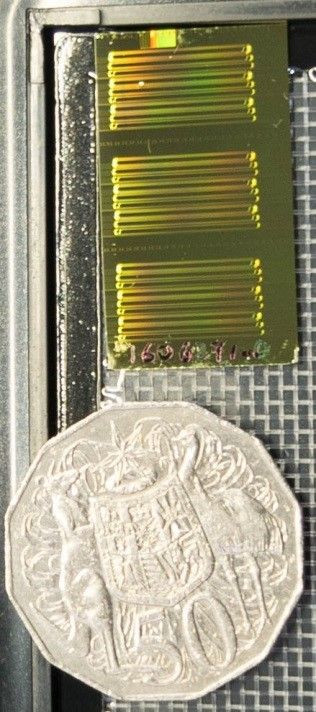From Light To Sound: Digital Information Storage For Photonic Circuits

As the processing power of computers continues to increase, there are laws of physics that start to create practical problems. For instance, using electrons to transfer data is limited by the speed of electrons, and electronic resistance generates heat, a fact most of us who use laptops and smartphones are well aware of.
A new microchip developed by researchers from the University of Sydney could change that. This chip, fabricated at the Australian Research Council’s Centre of Excellence for Ultrahigh bandwidth Devices for Optical Systems (CUDOS), takes data stored in photons and converts them to sounds waves, and then back to the optical domain.
Photons — the particles that make up light — are very good carriers of information, and since they do not have any charge — unlike electrons — they do not cause any heating even as they travel over very long distances through fiber-optic cables. Also, they travel much faster than electrons, meaning computer networks that use photons would be much faster than traditional digital networks relying on electrons. Photons are also impervious to disturbances caused by electromagnetic radiation.
This makes photons an ideal candidate to use in computing, and a lot of research is being done in the field of opto-photonics. However, the speed of photons also creates an inherent problem: they travel too fast for computers to actually process the data being carried by them, therefore making them potentially useless. This problem could be overcome if the photons could somehow be slowed down for processing, before being sent on their way again at their usual speed. And this is where the new microchip comes in.
“The information in our chip in acoustic form travels at a velocity five orders of magnitude slower than in the optical domain,” Birgit Stiller, research fellow at the University of Sydney and supervisor of the project, said in a statement Monday. “It is like the difference between thunder and lightning.”
The thunder and lightning analogy is fitting. Just as there is a delay between the flash of lightning and the roll of thunder that accompanies it, the delay between the light and sound in the chip “allows for the data to be briefly stored and managed inside the chip for processing, retrieval and further transmission as light waves,” according to the statement.
While various research institutions and even well-known companies like IBM and Intel are working on developing functional computer microchips that use photons instead of electrons, nothing is close to being produced at a commercially viable scale yet.
Moritz Merkelin of CUDOS, who was co-lead author of the research paper on the topic along with Stiller, said in the statement: “For this to become a commercial reality, photonic data on the chip needs to be slowed down so that they can be processed, routed, stored and accessed.”

Using acoustics is not the only possible solution to the problem, but it could be one of the breakthroughs in technology.
Calling their device a world first, Stiller said: “Our system is not limited to a narrow bandwidth. So unlike previous systems this allows us to store and retrieve information at multiple wavelengths simultaneously, vastly increasing the efficiency of the device.”
The research was published Monday in the journal Nature Communications.
© Copyright IBTimes 2024. All rights reserved.





















